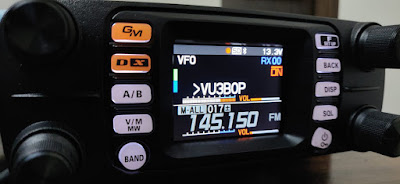It is possible to program the Yaesu FTM-300DR using the SD card transfer method. There is no need for a programming cable. Follow these steps for programming:
- Insert a blank SD card to the radio and format it. (F (long press)->SD CARD->Format)
- Backup the current memory channels to the SD card. (F (long press)->SD CARD->Backup->Write To SD->MEMORY)
- Remove the SD card and mount to the PC.
- Launch ADMS software. In the ADMS software, open the backed up file. (Communications(C)->Get Data from SD card(D)...). Locate the file MEMFTM300D.dat from SD card.
- Import the csv file containing the channels to the project. Make sure the Scan settings are set to the appropriate channels and remove the unwanted channels.
- Save the file to same location in SD card. (Communications(C)->Send Data from SD card(D)...)
- Insert the updated SD card back in radio and choose (F (long press)->SD CARD->Backup->Write To SD->MEMORY). Confirm the popup.
- The memories are written and the radio is programmed!
Download the current VU Repeaters csv file here.
References:
1. Convert Chirp format csv file to ADMS format csv file. https://github.com/bejoysat/chirp2yaesu
2. VU Repeaters for Chirp. https://raw.githubusercontent.com/bejoysat/amateurradio/master/Repeaters/VU-Repeaters-master.csv
3. FTM-300DR channels with all VU repeaters. https://raw.githubusercontent.com/bejoysat/amateurradio/master/Repeaters/FTM-300D%20VU3BOJ.csv


